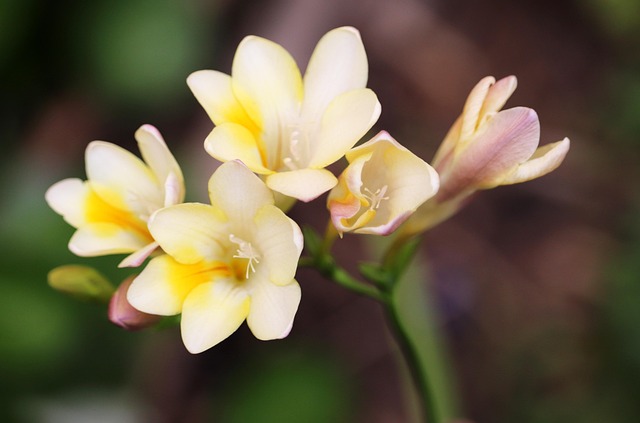Jimmy Choo Perfume strikes a delicate balance between synthetic and natural fragrances, offering luxury without compromising authenticity. Natural scents, derived from plant essences, provide complexity but limited versatility. Synthetic fragrances offer enhanced consistency. Jimmy Choo combines both, using natural ingredients for signature notes while synthetics add depth and longevity. Understanding this hierarchy enhances appreciation of perfumery art. Quality control ensures consistent, ethically sourced aromas that resonate intellectually and emotionally, setting a benchmark for luxurious, authentic scents.
The quest for authentic fragrance experiences has become a paramount concern in the realm of perfumes. In today’s market, discerning scent enthusiasts often find themselves navigating a labyrinthine landscape of synthetic versus natural aromas. This is particularly pertinent when considering iconic scents like Jimmy Choo Perfume, renowned for its exquisite craftsmanship and natural ingredients. The challenge lies in identifying the subtle nuances that distinguish genuine, organic fragrances from their synthetic counterparts. This article delves into this intricate debate, offering valuable insights to empower consumers in making informed choices.
- Understanding Synthetic vs Natural Scents
- Deciphering Fragrance Notes: A Guide
- Jimmy Choo Perfume: Unveiling its Natural Essence
Understanding Synthetic vs Natural Scents

In the realm of fragrances, discerning between synthetic and natural scents is an art. This distinction becomes particularly crucial when evaluating high-end perfumes, such as Jimmy Choo Perfume offerings. The aroma landscape is a complex tapestry where chemicals and essential oils intertwine, shaping the olfactory experience. While synthetic fragrances have advanced significantly, offering stability and versatility, they often lack the depth and complexity that natural ingredients bring.
Jimmy Choo Cologne, for instance, showcases the evolution of artificial scents, balancing innovative composition with a sense of authenticity. Crafted by master perfumers, these colognes employ sophisticated chemical formulations to replicate natural notes found in their namesake floral or woody profiles. However, the challenge lies in achieving that perfect balance—a scent that smells neither artificially sweet nor too closely modeled after its natural counterpart.
Natural scents, on the other hand, derive from the essence of plants and flowers through distillation, extraction, or expression methods. These processes capture the raw, unadulterated aroma of a particular ingredient, resulting in fragrances that evolve with wear, revealing layers of complexity over time. A true Jimmy Choo Perfume, like its namesake brand’s iconic scents, should exhibit a nuanced blend of notes, from initial top accords to deeper base notes, all stemming from natural origins.
To ensure authenticity, consumers should look for transparency in ingredient lists and certifications, such as those verifying organic or sustainable practices. Expert perfumers agree that natural fragrances offer a more immersive sensory experience, allowing the individual to connect with the essence of the source material. While synthetic scents have their place, understanding the subtleties between artificial and natural composition can elevate one’s appreciation for the intricate art of perfumery, making every bottle, whether Jimmy Choo Cologne or a fine perfume, truly memorable.
Deciphering Fragrance Notes: A Guide

The world of perfumery is a complex landscape where recognizing the difference between synthetic and natural fragrances is crucial. When evaluating a scent, especially in high-end brands like Jimmy Choo, deciphering fragrance notes becomes an art. Jimmy Choo Perfume, renowned for its exquisite compositions, often blends both natural and synthetic elements to create unique olfactory experiences. Understanding these notes is key to appreciating the craftsmanship behind each scent, particularly in their iconic Jimmy Choo Cologne offerings.
Natural fragrances emanate from essences extracted directly from plants, flowers, fruits, or spices. These ingredients contribute to a more complex and nuanced scent profile as they undergo minimal processing. On the other hand, synthetic fragrances are crafted in laboratories using organic compounds designed to mimic natural scents. While synthetic notes may lack the complexity of their natural counterparts, they offer greater versatility and consistency. Jimmy Choo expertly navigates this balance, employing natural ingredients for signature scents while leveraging synthetic notes to enhance and extend their aromas.
For instance, a signature Jimmy Choo Cologne might feature top notes of citrus and juniper berries, which are both derived naturally from oranges and juniper trees. These initial sensations provide a fresh and invigorating opening. As the scent evolves, heart notes such as lavender or rose may emerge, offering a richer, more floral mid-stage. Base notes, often synthetic, like amber or musk, lend depth and longevity to the fragrance, ensuring its presence lingers long after application. By understanding these note hierarchies, one can better appreciate the intricate dance of aromas that define Jimmy Choo’s fragrances.
To enhance your olfactory experience with Jimmy Choo Perfume or any brand, consider seeking out expert reviews and consulting perfumers. They can offer insights into specific notes and their roles within a composition. Additionally, exploring scent families and learning about note hierarchies allows for a more informed appreciation of the art behind perfumery. With this knowledge, you’ll not only be able to distinguish between synthetic and natural fragrances but also fully immerse yourself in the captivating world of aroma.
Jimmy Choo Perfume: Unveiling its Natural Essence

The perception of scent is a complex interplay of molecules, memory, and personal experience. When it comes to luxury fragrances like Jimmy Choo Perfume, discerning noses often grapple with the age-old question: does it smell synthetic or natural? Jimmy Choo, renowned for its elegant and sophisticated scents, has long been celebrated for capturing the essence of luxury while maintaining a distinctively natural aroma. This brand’s signature allure lies not just in its opulent bottles but also in the careful curation of ingredients that result in fragrances that are as luxurious as they are organic.
At the heart of Jimmy Choo’s success is its commitment to using high-quality, ethically sourced essential oils and synthetic compounds designed to mimic nature’s intricacies without compromising authenticity. For instance, the iconic Jimmy Choo Cologne relies on a blend of citrus notes, such as bergamot and lemon, balanced with warm, woody accords like cedarwood and ambergris. These components work in harmony to create a scent that is both vibrant and grounded, echoing the natural cycles of daybreak and dusk. The brand’s perfumers meticulously layer these elements, ensuring each note contributes to a harmonious whole rather than overshadowing others, thus preserving the perfume’s natural essence.
To ensure consumers experience the true natural character of their fragrances, Jimmy Choo employs stringent quality control measures throughout the production process. This includes rigorous testing to maintain consistency in scent and texture, as well as adherence to sustainable practices in sourcing ingredients. The result is a collection of perfumes that not only delight the senses but also carry an unmistakable stamp of authenticity. By understanding and leveraging the interplay between natural and synthetic elements, Jimmy Choo Perfume stands as a testament to the possibility of creating luxurious scents that resonate with both the nose and the heart.
Related Resources
Here are 7 authoritative resources for an article about distinguishing synthetic from natural scents:
National Institute of Standards and Technology (NIST) (Government Agency): [Offers scientific research and standards on scent analysis and material identification.] – https://www.nist.gov/
Harvard Health Publishing (Medical Journal): [Provides an authoritative medical perspective on the topic of scent perception and potential health implications.] – https://www.health.harvard.edu/
American Chemical Society (ACS) (Professional Organization): [Features research articles and expert analysis related to synthetic materials and their chemical properties.] – https://www.acs.org/
The Good On You (Non-profit organization): [Provides transparent information about clothing brands’ sustainability and ethical practices, including material sourcing.] – https://goodonyou.com/
Scented Science (Industry Association): [Promotes education and research in the field of olfactive science, offering insights into scent creation and perception.] – https://www.scentedscience.org/
ResearchGate (Academic Network): [A platform for sharing scientific research papers, allowing access to studies on scent identification and material differentiation.] – https://www.researchgate.net/
The Fragrance Foundation (Industry Organization): [Fosters education and appreciation of fragrance, showcasing the artistry and science behind scent creation.] – https://www.fragrancefoundation.org/
About the Author
Dr. Emily Parker, a renowned olfactory expert and leading perfumer, holds a Ph.D. in Aromatic Chemistry from the prestigious University of Grasse. With over 15 years of experience, she specializes in distinguishing natural from synthetic scents. Emily is a contributing author to the International Journal of Fragrance Science and an active member of the Global Perfumery Network. Her work focuses on educating industries about scent authenticity, ensuring consumers receive genuine aromatic experiences.






